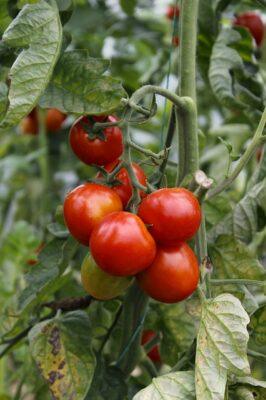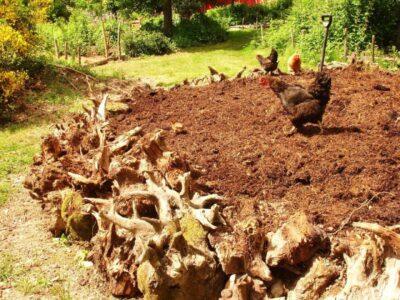Homesteading on a small plot of land offers many advantages that a larger plot cannot. For example, a small plot allows for easier control and management of space, soil and plants.
A half acre or less, utilized wisely and strategically, will produce just as much as a large plot of land interspersed with vegetation will. So, for those of you without a large 20-acre farm to work with, here are tips and tricks to small-scale homesteading to achieve all the perks of a large-scale farm and to grow all the food you need — with half the work.
Physical Solutions for the Farmer
A small scale homestead is less physically demanding. Walking and bending to tend the garden places a strain on homesteaders of all ages. On a smaller plot, plants are clustered closer together so that instead of walking far distances to tend to another part of the garden, you simply take a few steps or turn to tend the garden.
New 4-Ounce Solar Survival Lantern Never Needs Batteries!
Vertical gardening is one of the best solutions. You can go vertical in just two steps:
- Use trellis made of just about any material.
- Plant cucumbers, squash, pole beans, and fruit trees near the trellis so that they may “climb.”
While most vertical growing plants will cast a shadow and seem to be problematic, they really are not. Simply use the shade to grow greens that can’t take the heat of the sun.
Don’t Forget Planting Combinations
Growing plants closer together will produce more and keep weeds away. Growing on a small plot of land is all about efficiency — making the most of a small area. Interplanting gives you an additional benefit of companion planting. Try planting together tomatoes, basil and hot pepper. Then, when it’s time for tomato sauce, you have your tomatoes, basil and pepper in one place to pick. Corn, beans and squash are also a familiar garden trio.
Use Your Home
One place most gardeners don’t utilize is the house itself. South facing walls draw a lot of heat. Espalier trees against the house produce extra food. Placing thorny berry bushes under the windows will provide extra berries and keep prying eyes out of your windows.
Seed sprouting, growing micro greens, and mushrooming are all popular growing practices easily reproduced in the home, whether in the kitchen, garage or basement. Most edible plants — such as radishes and mung beans — make great candidates for sprouts. Eat the sprouts fresh or cook them in soups and other dishes.
Seeding Made Easy
- Place sprout seeds in Mason jar
- Soak them in water overnight
- Drain and rinse
- Set upside down in a dark place
- Rinse and drain twice a day, each day, for 5-7 days
- Enjoy
Grow Microgreens
Microgreens grow fast and are packed full of vitamins. They contain up to 10 times the nutritional value of the adult fruit. Eating one ounce of broccoli sprouts is about the same as eating 10 ounces of broccoli. It only takes about two weeks to harvest microgreens, so it’s a great salad option. Many seed dealers offer sprouting seeds and mixes that will be tasty in any meal.
Save Space
To squeeze in extra plants in the garden, consider spiral garden beds. In this, rocks are used to make a stylish spiral bed that may be filled in with herbs or strawberries. The stones absorb heat and warm the soil while the design doubles the planting area.
World’s Smallest Solar Generator … Priced So Low Anyone Can Afford It!
Hanging baskets and planters on decks or balconies can be used for flowers or to further produce sustenance. For convenience, a planter box in the kitchen makes fresh herbs easily accessible. Planters do, however, require a healthy dose of watering to ensure that they don’t dry out.
Go Forward By Looking Back
There is so much “new” old technology you can employ. Hugelkultur is a planting method using buried decaying wood to produce moisture, heat and nutrients for plants. The “Hugel” starts as a mound between 2-4 feet high and as long as you like it. They may contain swells to catch additional water, depending on your needs and space. I like “Hugels” because they simplify and double the harvest. A strategic layout includes planting high crops and low crops together while the mycelium growing in the wood enriches the soil. Even in droughts, “Hugel” plants are resilient.
Raise Rabbits
Rabbits on the homestead offer benefits to the soil and the freezer. Rabbits produce ready-made soil for your small plot of land with their excrement. Chicken manure must be composted for about a year and then still needs to be applied cautiously because of the high nutrients. Rabbit manure, however, is great for immediate use. These efficient farm animals are also a great source of protein and are almost cholesterol-free. One female rabbit can produce about 200 pounds of meat each year!
Self-sufficiency and homesteading does not necessitate a large plot of land. A small plot of land will do just fine, as long as measures are taken to ensure that all space is used to its maximum capacity and that layouts are strategic.
What advice would you add for homesteading on a small plot of land?
Learn How To ‘Live Off The Land’ With Just Your Gun. Read More Here.
 Off The Grid News Better Ideas For Off The Grid Living
Off The Grid News Better Ideas For Off The Grid Living







